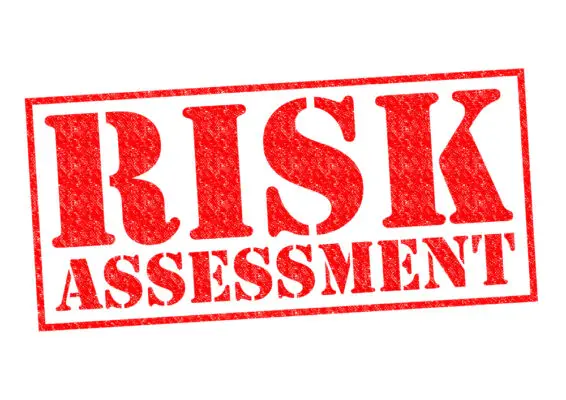Risk assessment in nursing refers to the systematic process of evaluating and analyzing potential hazards that can impact patient safety and well-being.
It involves gathering comprehensive information about the patient’s health history, physical condition, and environmental factors to identify any potential risks or vulnerabilities.
Nursing professionals utilize standardized tools and evidence-based guidelines to assess these risks accurately.
Risk assessment consists of several stages, including data collection, analysis, identification of risk factors, prioritization of risks, implementation of preventive measures, and ongoing evaluation.
Using standardized tools enhances the consistency and reliability of risk assessment practices across healthcare settings.
The primary goal of risk assessment in nursing is to prevent adverse events by proactively identifying potential risks before they occur.
Nurses can improve patient safety and healthcare outcomes by identifying potential risks early and addressing them appropriately.
Assessing risks is an absolutely crucial aspect of nursing practice. It is imperative that potential hazards are systematically identified and adverse events are prevented.
The significance of this process cannot be overstated, as patient well-being depends on implementing appropriate preventive measures based on thorough analysis and informed decision-making.

Importance of Risk Assessment in Nursing
The significance of risk assessment in nursing lies in its ability to proactively identify potential hazards and vulnerabilities, enabling healthcare professionals to implement appropriate preventive measures and interventions to ensure patient safety and optimize health outcomes.
A comprehensive risk assessment offers several benefits for patients and healthcare providers. Firstly, it allows nurses to accurately evaluate the individualized needs of patients, taking into consideration their medical history, current condition, and other relevant factors.
This enables the development of care plans tailored to address specific risks and concerns, leading to improved patient outcomes.
Secondly, risk assessment facilitates early detection of potential complications or adverse events, allowing for timely intervention and prevention of harm.
Nurses can effectively reduce risks and provide comprehensive care that addresses emotional and psychosocial health aspects by integrating risk assessment into care plans.
Process of Risk Assessment
A comprehensive evaluation of potential hazards and vulnerabilities is conducted to initiate the risk assessment process in the nursing field. This evaluation involves several steps to ensure a thorough assessment.
The first step is identification, where potential risks are identified based on past experiences, literature review, and expert opinions.
Next is the evaluation step, which involves analyzing the probability and severity of each identified risk. This allows nurses to prioritize risks and allocate resources accordingly.
Once risks have been evaluated, appropriate interventions can be implemented to mitigate or prevent harm.
Risk assessment tools are crucial in this process by providing structured frameworks for gathering data and guiding decision-making. These tools may include checklists, scoring systems, or algorithms that help nurses objectively assess risks.
The risk assessment process in nursing demands careful attention to detail and familiarity with different risk assessment steps and tools to guarantee patient safety.
Utilization of Standardized Tools
Utilizing standardized tools is essential to evaluate potential hazards and vulnerabilities in the nursing field comprehensively. These tools provide a systematic approach to identifying, assessing, and managing risks within healthcare settings.
Standardized tools for risk assessment in practice include checklists, scoring systems, and algorithms that guide nurses in systematically examining potential risks associated with patient care.
Nurses can collect impartial data about their patients’ conditions using uniform tools. Based on the severity or probability of risks, they can prioritize them and create interventions to minimize them.
This ensures a consistent and thorough assessment process across different healthcare settings, allowing for effective communication and collaboration among healthcare providers.
Furthermore, these tools help nurses identify patterns or trends in risk factors that may impact patient safety over time.
Using standardized tools in nursing practice improves the accuracy and reliability of risk assessments.

Role of Risk Assessment in Preventing Adverse Events
A crucial aspect of preventing adverse events involves evaluating and identifying potential risks and vulnerabilities. Risk assessment plays a vital role in this process by providing healthcare professionals with the necessary tools to identify at-risk patients and implement appropriate interventions.
Continuous monitoring is essential to ensure patients are regularly assessed for potential risks throughout their healthcare journey. This allows nurses to proactively address any identified risks before they escalate into adverse events.
Furthermore, the implementation of evidence-based interventions based on the results of risk assessments can significantly reduce the occurrence of adverse events. These interventions may include medication adjustments, fall prevention strategies, or infection control measures, among others.
Nursing can improve patient safety and outcomes by continuously monitoring and using evidence-based interventions for risk assessment.
| Importance of Continuous Monitoring | Implementation of Evidence-Based Interventions |
|---|---|
| Regularly assesses for potential risks | Reduces occurrence of adverse events |
| Proactively addresses identified risks | Improves patient safety |
| Prevents escalation into adverse events | Enhances patient outcomes |
Significance of Risk Assessment in Nursing Practice
Risk assessment is pivotal in informing nursing practice, guiding healthcare professionals to identify potential vulnerabilities and implement necessary interventions to mitigate risks and ensure optimal patient safety and outcomes.
The significance of risk assessment in nursing practice can be observed through the following benefits:
- Early identification of risks: Risk assessment allows nurses to identify potential hazards or vulnerabilities early on, enabling timely intervention and prevention of adverse events.
- Tailored care planning: By assessing individual patient risks, nurses can develop personalized care plans that address specific needs, ensuring appropriate interventions are implemented to minimize harm.
- Improved communication and collaboration: Risk assessment promotes effective communication among healthcare professionals, facilitating multidisciplinary collaboration to address identified risks collectively.
- Enhanced patient outcomes: Through proactive risk identification and management, risk assessment improves patient outcomes by reducing adverse events.
However, several challenges exist in conducting effective risk assessments. These include limited resources for comprehensive assessments, time constraints in busy clinical settings, and varying knowledge and skills among healthcare professionals regarding risk assessment tools and techniques.
Addressing these challenges requires ongoing education and training for nursing staff and consistent support from healthcare organizations in providing adequate resources for conducting thorough risk assessments.
Frequently Asked Questions
What are the different types of risks that can be assessed in nursing?
The risks that can be assessed in nursing include physical, psychological, social, and environmental risks. Risk assessment is important in identifying potential hazards and implementing preventive measures to ensure patient safety and well-being.
How often should risk assessments be conducted in nursing practice?
Risk assessments in nursing practice should be conducted regularly to ensure the ongoing identification and management of potential risks.
The frequency and timing of these assessments should be determined based on the specific needs and circumstances of each healthcare setting.
What are some common challenges faced during the risk assessment process in nursing?
Common challenges faced during the risk assessment process in nursing include difficulties in documentation, such as lack of standardized tools and time constraints, as well as communication barriers that hinder effective information exchange between healthcare providers and patients.
How does risk assessment contribute to patient safety in nursing?
Risk assessment plays a crucial role in ensuring patient safety in nursing. It helps identify potential risks and implement strategies to mitigate them, reducing adverse events and improving the overall quality of care provided.
The importance of risk assessment cannot be overstated in nursing practice.
Are there any legal implications associated with risk assessment in nursing practice?
There are legal implications associated with risk assessment in nursing practice, as it is a crucial aspect of patient safety. Ethical considerations must also be taken into account to ensure that the rights and well-being of patients are protected.

Conclusion
In conclusion, it is imperative to acknowledge the importance of risk assessment in nursing practice as it enables the identification of potential hazards and ultimately prevents unfavorable incidents from occurring.
The process involves assessing the likelihood and severity of patient harm and implementing appropriate interventions to minimize these risks.
Using standardized tools ensures consistency and accuracy in risk assessment while facilitating communication between healthcare professionals.
Nurses can prioritize patient safety and provide high-quality care by conducting thorough risk assessments.
Risk assessment is an essential element of nursing practice that helps to minimize potential hazards and achieve optimal patient outcomes.

Chris Ekai is a Risk Management expert with over 10 years of experience in the field. He has a Master’s(MSc) degree in Risk Management from University of Portsmouth and is a CPA and Finance professional. He currently works as a Content Manager at Risk Publishing, writing about Enterprise Risk Management, Business Continuity Management and Project Management.


